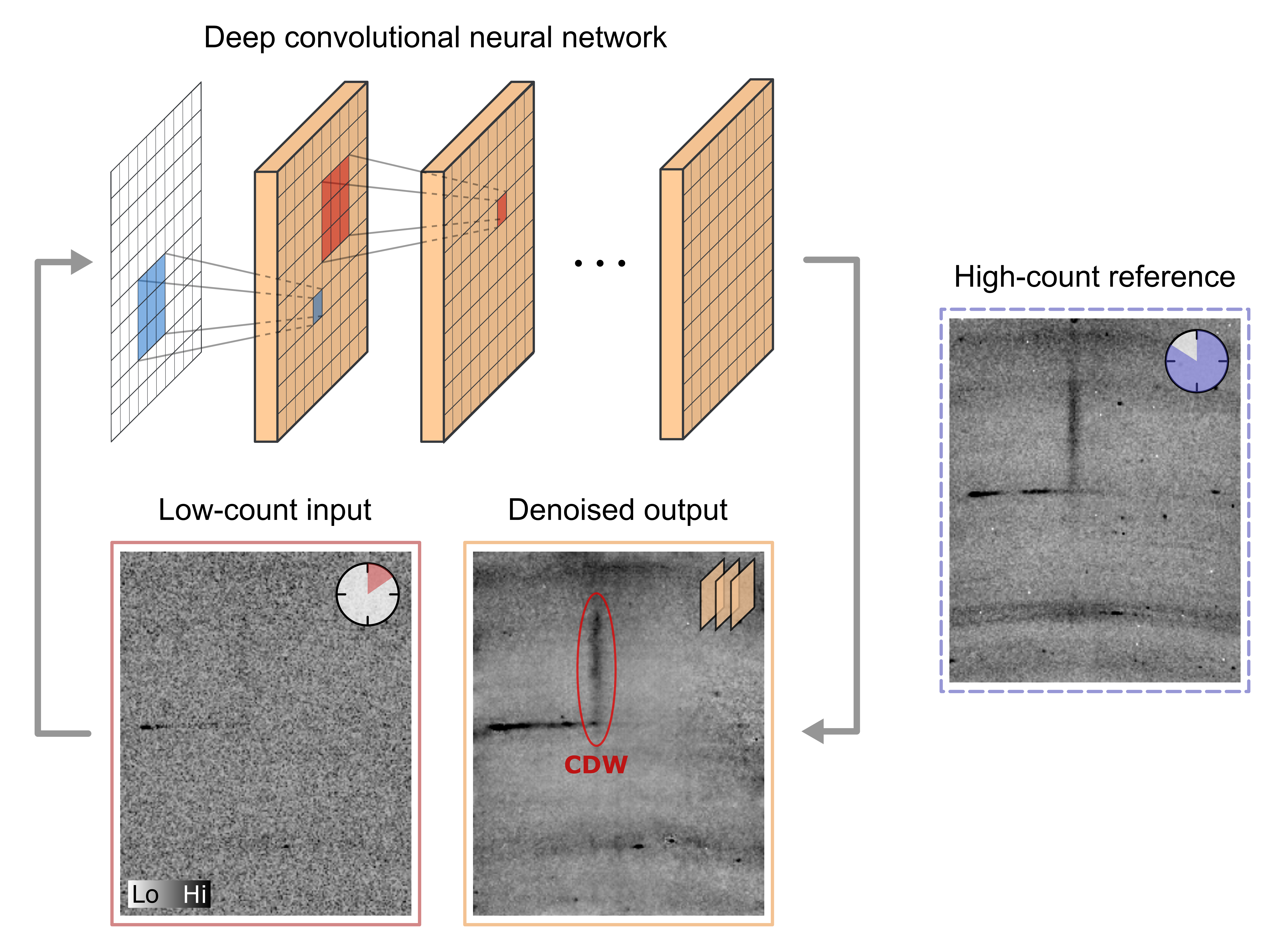Navigation auf uzh.ch
Navigation auf uzh.ch
A recent publication in Nature Machine Learning by the groups Neupert, Natterer and Chang shows how weak signals can be extracted by neural network denoising

Noise removal or noise cancellation is a computer science discipline with wide-spread applications in imaging and acoustics. For everyday life, such as image restoration, denoising may include generative aspects, unfaithful to the ground truth. For scientific use, however, denoising must reproduce the ground truth accurately. The denoising of scientific data is further challenged by unknown noise profiles. In fact, such data will often include noise from multiple distinct sources, which substantially reduces the applicability of simulation-based approaches.
In a recent publication, we show how scientific data can be denoised by using a deep convolutional neural network such that weak signals appear with quantitative accuracy. In particular, we show-case X-ray diffraction and resonant X-ray scattering data recorded on crystalline materials. It is demonstrated how weak signals stemming from charge ordering, insignificant in noisy data, become visible and accurate in denoised data. This success is enabled by supervised training of a deep neural network with pairs of measured low- and high-noise data. Thus, our approach illustrates a practical strategy for noise filtering that can be applied to challenging acquisition problems.
This work was made possible through collaboration between several young scientists of our department (Group Neupert, Natterer, & Chang). Big data (>100M pixels) collection by Julia Küspert, Leonardo Martinelli, and Izabela Biało paved the way for deep learning approaches executed by Jens Oppliger and Michael Denner.
The paper was published on 13 February 2024 in Nature Machine Intelligence. https://www.nature.com/articles/s42256-024-00790-1
Katharina Müller